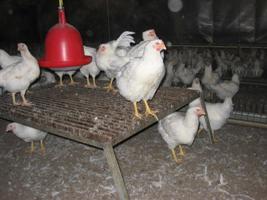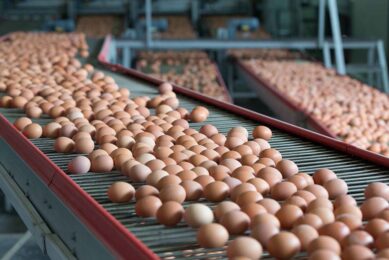Minimising floor eggs in the lay house

Egg producers can sometimes face the problem of getting the hens to use the nest provided rather than laying eggs on the floor or slats.
Lighting needs to be uniform within the rearing house and reduced in intensity from the lay house. Artificial lighting should be placed to supply the correct intensity and eliminate shadows. Mechanisms like perches in rearing will help train the birds to jump up onto slatted areas.
Ventilation should be designed to provide airflow patterns that keeps the environment as uniform as possible to reduce bird migration towards more comfortable areas in the house.
Feeding and watering equipment should not restrict passage to and from the nest sites. Nests should be readily available, clean, properly ventilated and maintained for the best hen comfort.
Slats should be low enough to allow the hen’s easy access. An angle of more than 10 degrees on slats is uncomfortable for the hens and may lead to more floor eggs.
From around 23 weeks through peak production, it is best to walk the hens in a slow, consistent pattern which encourages the hens to move toward the nests. Attention to these details is necessary to reduce the number of floor and slat eggs.
Join 31,000+ subscribers
Subscribe to our newsletter to stay updated about all the need-to-know content in the poultry sector, three times a week. Beheer
Beheer








 WP Admin
WP Admin  Bewerk bericht
Bewerk bericht